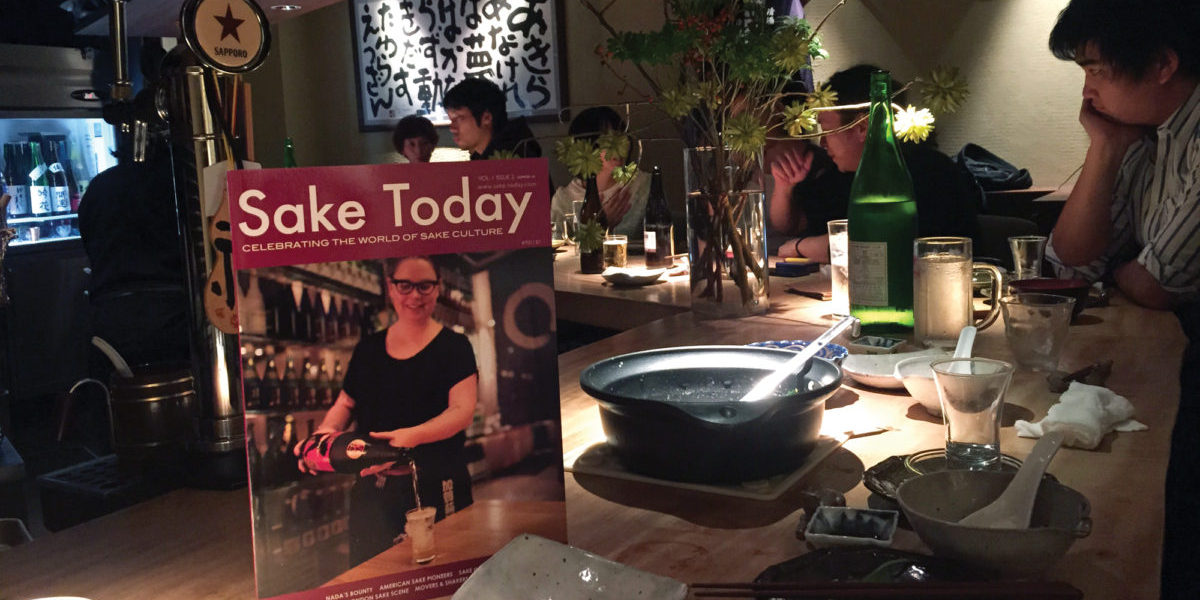A recent social media post by a sake brewer who travels the world proactively promoting his product described a couple of sake events in London at which he appeared. He then, after the modern literary equivalent of a pregnant pause, stated confidently, “The pace at which sake is growing in popularity is accelerating appreciably.”
While the original Japanese conveyed much more passion, without a doubt, the pace is accelerating appreciably. How is this pace measured? Let me count the ways.
Exports of sake have been on a steady increase for well over a decade. An admittedly rough estimate would be an average increase of ten to twelve percent a year. Sustained. Over a decade. This is remarkable for any product, any region and any era. And it looks poised to continue for a while.
While there has not been an explosion of sake exports, that is likely better since anything that explodes in popularity eventually sizzles into oblivion. Slow and steady wins the race.
So more and more sake is leaving Japan. On the other end, the number of countries embracing it on a serious level is increasing as well. Very often, sake enters new culinary markets along with Japanese food, which is fine, but it soon stands on its own merits.
Once it enters those markets, someone has to sell it. Fortunately, the number of wine professionals that are embracing sake is growing. Of course, someone has to teach both wine pros and consumers about sake. The value of a proper education cannot be underestimated. Almost as if guided by an invisible support network, the opportunities for learning about sake are becoming more commonplace. Seminars, courses, and full-on educational programs with certification are available in many major cities around the world.
Sake tourism is on the horizon, too. There are several tour companies offering sake-centric visits to Japan. In fact, the government of Japan is supporting these efforts while developing its own, focused both on domestic and international fan bases.
Media attention–serious media attention–is on the rise. Back in the day, once every couple of years a major magazine or newspaper might cover sake with tongue-in-cheek tone suffusing the article. Not anymore. Coverage these days is much more thorough, technically advanced and serious than even a decade ago.
At least in North America, many alcoholic beverage distribution organizations are insisting on having a sake specialist on board. Not a sake team, mind you–at least not yet. But most big distributorships have realized the need to have at least one person who knows sake well and can help it move.
While domestic consumption of sake in Japan ironically continues to decrease, the domestic premium sake market is healthy. Outside Japan, the number of places making sake is growing. Beyond the dozen or so kura in the U.S., sake is made in Korea, Brazil, Canada, Norway and Scotland. Such grassroots endeavor is crucial, and the fact that it is growing is encouraging for sure.
With all that as a background, what can you as a reader accomplish? Do your part by drinking sake. It all starts there. But there is much, much more we can all do.
Study a bit. Sure, sake is supposed to be fun, but take the time to learn about sake, rather than just drinking anything. Demand diversity. Ask your local purveyor to stock something new. Persist until they stock something. Try something different each time. Expand your sake horizons. We all have our favorite brands, but trying something new and coming back to those favorites is rewarding.
Think for yourself. Sake is, for the most part, thankfully free of numeric scores like you see with wine. While those are not all bad, eschewing them whenever you can is always the best option.
All of these efforts, however meager they might seem at the time, will fill the sails with wind and help sake’s momentum, until the time comes when you will look back and marvel at how big sake has become. You will know that you were a part of its growth, that you were way ahead of the curve, that you were enjoying it back when it was just becoming popular. And you’ll wonder what took everyone so long.
Indeed, the pace is accelerating appreciably.
* * *
In this issue Haruo Matsuzaki joins us again to enlighten us about sake from the major production region in and around Kyoto. Master Sommelier Sally Mohr presents sake and food pairing from the unique perspective of her craft. Koji and its significance are presented in detail, along with the ins and outs of traditional bottle sizes in the sake world. Enjoy the various angles from which sake can be enjoyed today.
John Gauntner






